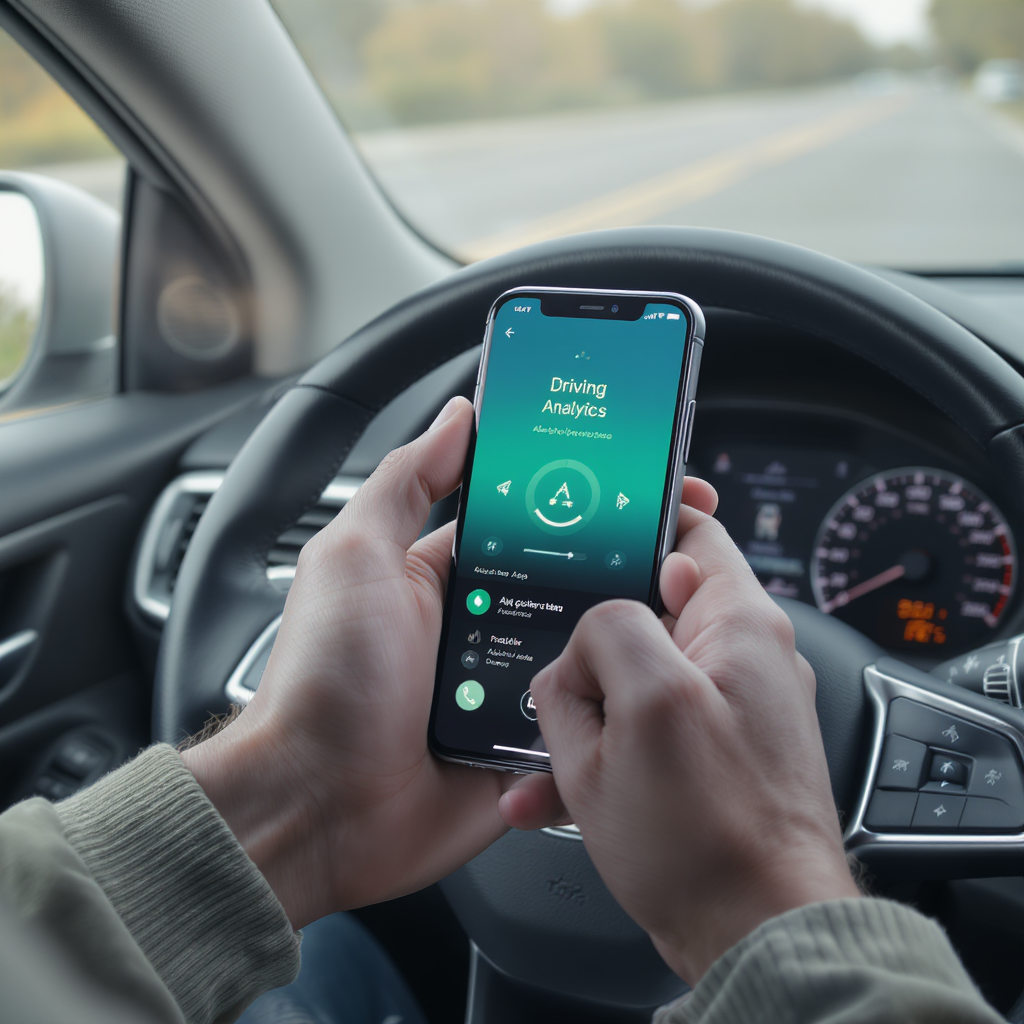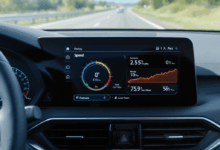Navigating the Road to Savings – Your Guide to Usage-Based Car Insurance Plans

Understanding Usage-Based Car Insurance Plans
Usage-based car insurance (UBI) plans are revolutionizing how we think about auto insurance. Instead of relying on broad demographics, these policies adjust your premiums based on your actual driving behavior. This means safer drivers can enjoy significant savings, while insurers benefit from more accurate risk assessments. Let’s explore how you can get started with these innovative insurance solutions.
Prerequisites for Enrollment
Before diving into the specifics of UBI, it’s essential to ensure you’re prepared:
– Clean Driving Record: Most UBI programs require a clean driving history. Check your record before applying.
– Smartphone: Many UBI plans use apps to track your driving, so having a smartphone is crucial.
– Willingness to Adapt: Be ready to adjust your driving habits based on feedback from the insurance company.
Step-by-Step Process to Enroll in a UBI Plan
Follow these steps to choose and enroll in a usage-based car insurance plan:
- Research Available UBI Programs
- Compare Options: Look for insurers that offer UBI. Websites like Insurance.com can provide comparisons.
- Read Reviews: Check consumer reviews to gauge satisfaction with different providers.
-
Evaluate Discounts: Assess potential savings against traditional insurance plans.
-
Check Eligibility
- Clean Record Requirement: Ensure your driving record meets the insurer’s standards.
-
Age and Vehicle Restrictions: Some insurers may have age limits or specific vehicle requirements.
-
Download the Insurance App
- Installation: Go to your app store, search for your chosen insurer’s app, and install it on your smartphone.
-
Account Setup: Create an account using your personal information and vehicle details.
-
Set Up Telematics Device (if applicable)
- Device Installation: If your insurer requires a telematics device, follow the installation instructions provided. Most devices plug into your car’s OBD-II port.
-
App Integration: Ensure the app is connected to the device to track your driving data effectively.
-
Start Driving & Tracking
- Monitor Your Driving: The app or device will start collecting data on your driving behavior, including speed, braking, and acceleration.
- Feedback Loop: Use the feedback provided to improve your driving habits. Safer driving can lead to lower premiums over time.
Verification and Troubleshooting
After enrolling and using your UBI plan, it’s essential to verify that everything is functioning correctly:
- Check Your App Regularly: Ensure your driving data is being recorded and that there are no connectivity issues.
- Review Feedback: Consistently evaluate the feedback on your driving habits and make necessary adjustments.
- Contact Customer Service: If you notice discrepancies in your data or have questions, don’t hesitate to reach out to your insurer’s support team. They can assist with troubleshooting any issues.
Conclusion
Usage-based car insurance plans offer a personalized approach to auto insurance, rewarding safe driving with potential savings. By understanding the prerequisites, following the enrollment steps, and regularly verifying your performance, you can make the most of these innovative insurance solutions. Are you ready to take control of your insurance costs and drive towards savings?
Advanced Techniques for Mastering Usage-Based Car Insurance Plans
Navigating the world of usage-based car insurance (UBI) can be daunting, especially as you seek to maximize benefits while minimizing costs. Here, we explore advanced techniques to elevate your understanding and application of UBI, ensuring you can harness its full potential for cost-effective insurance solutions.
Understanding Advanced Configuration Settings
When enrolling in a UBI plan, understanding the advanced configuration settings can make a significant difference. Here’s how to optimize your experience:
1. Telematics Device Customization
- Personalized Data Tracking: Many telematics devices allow you to adjust settings to prioritize certain driving metrics, such as speed and braking patterns. Adjust these settings based on your driving style to provide insurers with the most relevant data.
- Data Sharing Preferences: Review the privacy settings of your telematics app. Some programs allow you to control the extent of data shared with the insurer, which can impact your premium calculations.
2. Feedback Response Optimization
- Actionable Insights: After receiving feedback from your UBI app, take note of specific areas to improve, such as harsh braking or rapid acceleration. Setting personal goals based on these insights can lead to better driving habits and further savings.
- Regular Reflection: Create a weekly or monthly review of your driving behavior using app data. This habit not only helps in identifying patterns but also keeps you engaged in improving your driving style.
Expert Optimization Techniques for Enhanced Savings
Optimizing your UBI plan involves more than just good driving; it also requires strategic planning. Here are some expert techniques:
1. Mileage Management
- Route Planning: Use navigation apps that suggest the most efficient routes. Not only does this save fuel, but it also limits mileage, reducing your overall premium.
- Carpooling Strategies: Consider carpooling when possible. Not only does this reduce wear and tear on your vehicle, but it also lowers your mileage, which can positively affect your UBI rates.
2. Driving Behavior Adjustments
- Practice Defensive Driving: Engage in defensive driving courses that can teach you techniques to minimize risky behaviors, which are often recorded by telematics devices. This proactive approach can lead to better scores and lower premiums.
- Regularly Check for Discounts: Keep an eye on the discounts your insurer offers based on driving behavior. Sometimes, even a small improvement can unlock additional savings.
Troubleshooting Common Issues with UBI Plans
Even with advanced planning, issues can arise with UBI. Here are expert troubleshooting techniques to handle common scenarios:
1. Connectivity Problems
- Device Verification: If your telematics device isn’t recording data, first check its connection. Make sure it’s properly plugged into your vehicle’s OBD-II port. If it’s a smartphone app, ensure that permissions for location services are enabled.
- Reinstallation: Sometimes, simply reinstalling the app or resetting the telematics device can resolve ongoing connectivity issues. This can refresh the connection and ensure accurate data tracking.
2. Discrepancies in Driving Data
- Data Cross-Verification: If you notice discrepancies in your driving data, cross-check with your driving logs or GPS data. This can help clarify if the issue lies with the app or your driving habits.
- Engage with Customer Support: Don’t hesitate to reach out to your insurer’s customer service if data discrepancies persist. They can provide clarity and help rectify any potential errors.
Automation Strategies for Efficient Management
To streamline your management of UBI plans, consider these automation strategies:
1. Automated Feedback Alerts
- Set Up Notifications: Many UBI apps allow you to set notifications for specific driving behaviors. Automating these alerts ensures you’re always aware of your driving habits without having to check the app constantly.
- Integration with Smart Devices: Consider integrating your UBI app with smart home devices. For instance, setting reminders on smart speakers to review your driving data weekly can help maintain accountability.
2. Regular Policy Review Automation
- Calendar Reminders: Automate reminders to review your policy at regular intervals, such as annually or bi-annually. This ensures you’re always aware of your current coverage and can make adjustments if your driving habits change.
- Comparison Tools: Use automated comparison tools that periodically check for better UBI offers based on your driving data and habits. This can save you time and potentially lower your premiums further.
By mastering these advanced techniques, you can navigate the complexities of usage-based car insurance with confidence, ensuring that you not only save money but also foster safer driving habits. What strategies will you implement to optimize your UBI experience?

As we wrap up our exploration of usage-based car insurance, it’s clear that this innovative approach not only offers potential savings but also encourages us to reflect on our driving habits and behaviors. The journey through this new landscape of insurance isn’t merely about numbers; it’s about understanding ourselves as drivers and the choices we make on the road.
Have you considered how your daily driving habits impact your insurance costs? What small changes could you implement to enhance safety and save money? As you embark on this journey, remember that the process of self-improvement is ongoing. Embrace the feedback from your UBI program, and let it guide you toward safer driving.
In a world where technology continually reshapes our experiences, are we prepared to adapt and grow alongside these changes? The path forward is not just about securing cheaper rates but also about fostering a culture of responsible driving that benefits us all. What will your next step be?

